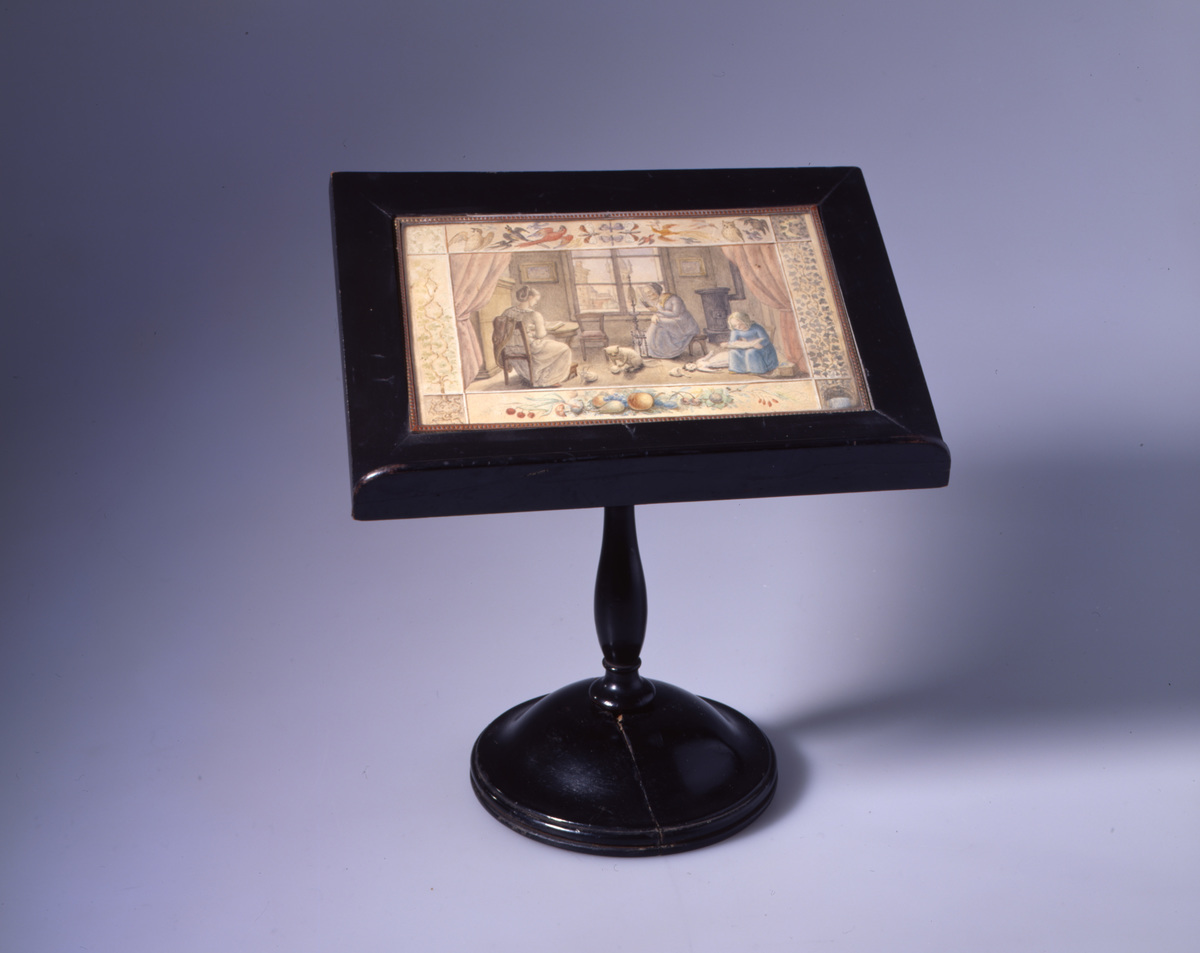Source

Source: Deutsches Historisches Museum, Inv.-Nr. K 54/99
Furniture as an object of material culture not only served functional purposes but also helped set the social tone of a room and asserted its owners’ claims to social status. Items of furniture also supported certain ideologies, either indirectly, through their function and appearance, or sometimes more directly, as in the case here. Ownership of a high-quality lacquered wooden reading stand itself spoke both to a family’s status as well-off and educated, and to the place of reading culture within the broader middle-class culture and ideology. This particular reading stand, however, carried an even more explicit message, insofar as it featured an inlaid image of a domestic scene highlighting the foundational place of the family—and its gendered spheres—in bourgeois culture. The furnishings depicted in the scene gesture toward comfort and affluence, while asserting that women’s place was in the home, not in the world outside the window. Even if reading played a part in women’s education and status in all stages of life—youth, adulthood, and old age—domestic work and child rearing were to remain their primary concerns. That the child depicted with a doll is a girl being trained to assume the same role as the adult women in the scene makes the self-perpetuating nature of the Biedermeier bourgeois gender order all the more evident.

Source: Deutsches Historisches Museum, Inv.-Nr. K 54/99
© Deutsches Historisches Museum, Berlin